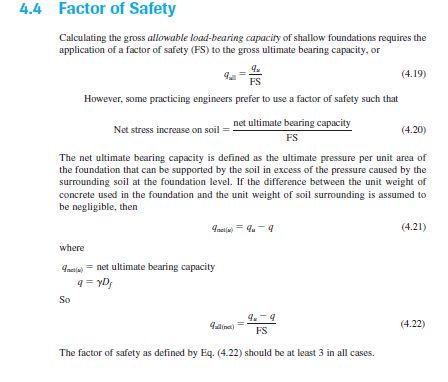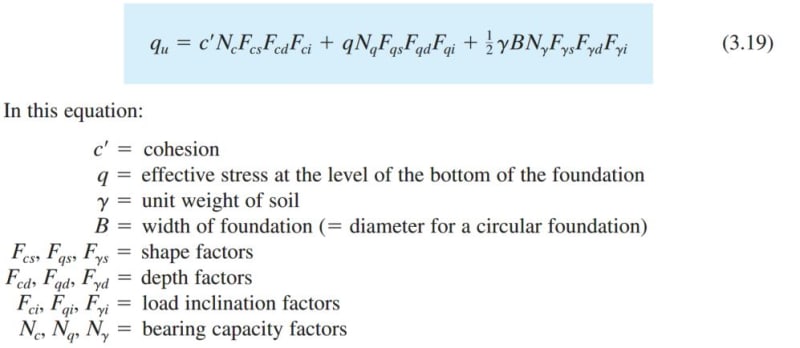Hello Engineers,
Few years ago I was involved in a project which consisted in the construction of a 12-story building + 3 levels of basement (27 ft deep excavation).
The geology of the area is weathered coralline limestone (see picture attached).
Consultant A (the original geotech consultant) recommended an allowable bearing capacity (Qall) of 5000 psf, using the typical bearing capacity equations by Terzagui. This BC was recommended at the bottom of the excavation (27 ft below original surface).
Somehow someone on the client' side decided to get a second opinion with consultant B.
Consultant B recommended for the same building an allowable bearing capacity (Qall) of 8300 psf. He computed the bearing capacity using the typical BC equations like Consultant A however Consultant B added the overburden pressure at the bottom of the excavation. 5000 psf + 120 pcf x 27 ft ~ 8300 psf.
I understand that you may add the OB pressure (120 x 27 ~ 3300 psf) because there is a compensation at the time the excavation is performed, however, do you think it is correct to add up the full OB pressure?. I ask that because due to the weathered limestone material, cohesion plays a factor, so i don't think the full height of the OB (27 ft) would exert at the bottom of the excavation. Due to this, i can not tell what percentage of the OB would it be proper to consider for BC recommendations.
If the OB was clean sand, I would agree with Consultant B.
On other note, I found interesting that consultant B computed settlements considering a net foundation pressure (qn) of 5000 psf (local shear, Qall - OB). I understand that since he recommended a Qall of 8300 psf (considering OB) this should be the stress to be considered for settlement computations.
Please let me know your thoughts.
Few years ago I was involved in a project which consisted in the construction of a 12-story building + 3 levels of basement (27 ft deep excavation).
The geology of the area is weathered coralline limestone (see picture attached).
Consultant A (the original geotech consultant) recommended an allowable bearing capacity (Qall) of 5000 psf, using the typical bearing capacity equations by Terzagui. This BC was recommended at the bottom of the excavation (27 ft below original surface).
Somehow someone on the client' side decided to get a second opinion with consultant B.
Consultant B recommended for the same building an allowable bearing capacity (Qall) of 8300 psf. He computed the bearing capacity using the typical BC equations like Consultant A however Consultant B added the overburden pressure at the bottom of the excavation. 5000 psf + 120 pcf x 27 ft ~ 8300 psf.
I understand that you may add the OB pressure (120 x 27 ~ 3300 psf) because there is a compensation at the time the excavation is performed, however, do you think it is correct to add up the full OB pressure?. I ask that because due to the weathered limestone material, cohesion plays a factor, so i don't think the full height of the OB (27 ft) would exert at the bottom of the excavation. Due to this, i can not tell what percentage of the OB would it be proper to consider for BC recommendations.
If the OB was clean sand, I would agree with Consultant B.
On other note, I found interesting that consultant B computed settlements considering a net foundation pressure (qn) of 5000 psf (local shear, Qall - OB). I understand that since he recommended a Qall of 8300 psf (considering OB) this should be the stress to be considered for settlement computations.
Please let me know your thoughts.


